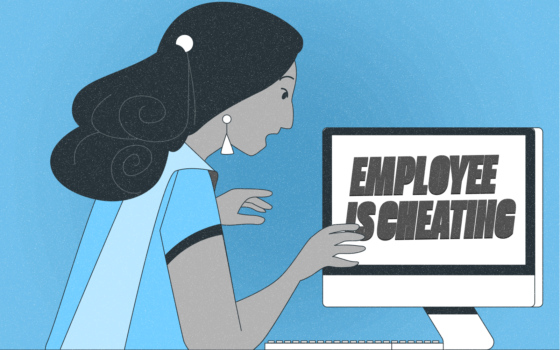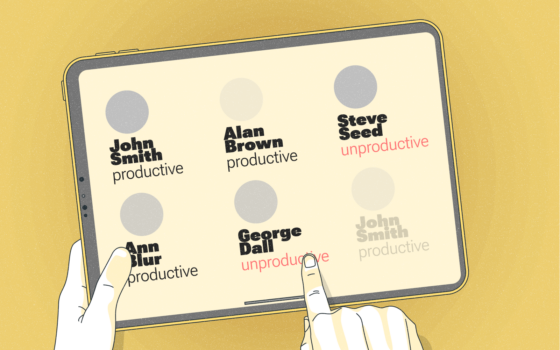What Is a Chronotype?
A chronotype refers to an individual's natural inclination towards specific sleep-wake patterns and periods of peak alertness throughout the day. Understanding one's chronotype can significantly impact productivity, health, and overall well-being in both personal and professional contexts. Key points: • There are four main chronotypes: Bear, Lion, Wolf, and Dolphin • Chronotypes are influenced by genetics, age, and environmental factors • Aligning work schedules with chronotypes can boost productivity and job satisfaction • Chronotype awareness can improve team dynamics and organizational efficiency
In the ever-evolving landscape of human resources and workplace management, understanding the concept of chronotypes has become increasingly important. This biological phenomenon plays a crucial role in determining an individual's optimal times for sleep, productivity, and various daily activities. As organizations strive to create more efficient and employee-friendly work environments, incorporating chronotype awareness into HR strategies can lead to significant improvements in productivity, job satisfaction, and overall well-being.
Understanding Chronotypes
A chronotype is essentially an individual's natural circadian rhythm or internal clock. It determines when a person feels most alert, productive, or sleepy throughout the day. While the concept has been around for decades, recent research has shed new light on its implications for workplace dynamics and personal health.
Dr. Michael Breus, a renowned sleep expert, popularized the idea of four main chronotype categories in his book "The Power of When." These categories, named after animals, provide a framework for understanding different sleep-wake patterns:
| Chronotype | Description | Percentage of Population |
| Bear | Follow the solar cycle, most energetic during daylight hours | 50-55% |
| Lion | Early risers, most productive in the morning | 15-20% |
| Wolf | Night owls, most alert in the evening | 15-20% |
| Dolphin | Light sleepers, may struggle with consistent sleep patterns | 10% |
It's important to note that these categories are not rigid, and individuals may find themselves identifying with characteristics from multiple chronotypes or experiencing shifts in their chronotype over time.
The Science Behind Chronotypes
Chronotypes are primarily determined by genetic factors, specifically variations in the PER3 gene. This gene plays a crucial role in regulating our circadian rhythms, which are influenced by external cues like light exposure and temperature changes.
Research conducted by the University of Munich has shown that chronotypes are distributed along a bell curve, with most people falling somewhere in the middle (Bears) and smaller percentages at either extreme (Lions and Wolves). A study published in the journal "Nature Communications" in 2023 found that chronotype preferences can be traced back to specific genetic markers, further solidifying the biological basis of this phenomenon.
Our genetic makeup plays a significant role in determining our chronotype, but environmental factors and age can also influence our sleep-wake preferences over time.
Interestingly, chronotypes are not static throughout one's life. Children and teenagers tend to have later chronotypes, often exhibiting "Wolf-like" tendencies. As people age, there's typically a shift towards earlier chronotypes, with many older adults naturally becoming "Lions."
Chronotypes in the Workplace
Understanding chronotypes can have profound implications for workplace productivity and employee well-being. Here are some key considerations for HR professionals:
- Flexible Work Schedules: Allowing employees to work during their most productive hours can lead to increased efficiency and job satisfaction. For example, a "Wolf" might perform better with a later start time, while a "Lion" could benefit from early morning shifts.
- Meeting Scheduling: Consider team members' chronotypes when planning meetings. Mid-morning meetings might be ideal for a mix of chronotypes, while avoiding late afternoon meetings could benefit "Lions" who may experience an energy dip during that time.
- Task Allocation: Assign complex or high-priority tasks to employees during their peak alertness periods. This can lead to better quality work and reduced errors.
- Team Composition: When forming project teams, a mix of chronotypes can ensure consistent productivity throughout the day. This diversity can also foster creativity and problem-solving from different perspectives.
A 2023 study by the Society for Human Resource Management (SHRM) found that companies implementing chronotype-aware policies saw a 12% increase in overall productivity and a 15% reduction in reported workplace stress levels.
Chronotypes and Health
Beyond workplace productivity, chronotypes have significant implications for individual health and well-being. Research has shown that misalignment between one's chronotype and daily schedule can lead to various health issues:
| Health Concern | Impact of Chronotype Misalignment |
| Sleep Quality | Increased risk of insomnia and sleep disorders |
| Mental Health | Higher rates of depression and anxiety |
| Cardiovascular Health | Elevated risk of heart disease and hypertension |
| Metabolic Function | Increased likelihood of obesity and type 2 diabetes |
| Cognitive Performance | Reduced memory function and decision-making abilities |
A groundbreaking study published in the "Journal of Sleep Research" in 2024 found that individuals working in alignment with their chronotype reported 30% fewer sleep-related health issues compared to those working against their natural rhythms.
Assessing Chronotypes
For HR professionals looking to implement chronotype-aware policies, accurate assessment is crucial. While there are numerous online quizzes available, it's important to use scientifically validated tools. Some reliable options include:
- Munich ChronoType Questionnaire (MCTQ): Developed by chronobiologists at the University of Munich, this comprehensive questionnaire is widely used in scientific research. It's available for free at https://www.thewep.org/documentations/mctq.
- Automated Morningness-Eveningness Questionnaire (AutoMEQ): An updated version of the classic Morningness-Eveningness Questionnaire, available through the Center for Environmental Therapeutics at https://cet.org/assessments/.
- Circadian Type Inventory (CTI): This tool focuses on flexibility of sleeping habits and ability to overcome drowsiness, providing additional insights beyond basic chronotype classification.
It's worth noting that while these assessments are helpful, they should be used as guides rather than definitive categorizations. Encouraging employees to self-reflect on their energy patterns and productivity cycles can be equally valuable.
Implementing Chronotype-Aware Policies
For organizations looking to leverage chronotype knowledge, here are some practical steps to consider:
- Education and Awareness: Conduct workshops or provide resources to help employees understand their chronotypes and how to optimize their schedules accordingly.
- Flexible Work Arrangements: Implement policies that allow for flexible start and end times, as well as the option for remote work when possible.
- Chronotype-Informed Team Building: Consider chronotype diversity when forming project teams to ensure round-the-clock productivity and creativity.
- Lighting and Environment: Optimize workplace lighting to support natural circadian rhythms. For example, brighter lights in the morning and dimmer, warmer lights in the afternoon.
- Performance Evaluation Adjustments: Recognize that peak performance times may vary among employees and adjust evaluation criteria accordingly.
Challenges and Considerations
While the benefits of chronotype awareness are clear, implementing related policies can present challenges:
- Coordination Difficulties: With flexible schedules, ensuring adequate overlap for team collaboration can be tricky.
- Fairness Concerns: Some employees may perceive chronotype-based accommodations as preferential treatment.
- Client/Customer Needs: Businesses with specific operating hours may struggle to fully accommodate all chronotypes.
- Change Resistance: Long-standing workplace norms can be difficult to shift, requiring patience and persistent education.
Addressing these challenges requires clear communication, fair policies, and a willingness to iterate on implementations based on feedback and results.
The Future of Chronotype Research
As we look ahead, the field of chronotype research continues to evolve. Emerging areas of study include:
- Chronotype and Artificial Intelligence: AI-powered tools are being developed to predict optimal work schedules based on individual chronotypes and task requirements.
- Chronotype-Responsive Environments: Smart buildings that automatically adjust lighting, temperature, and noise levels based on the chronotypes of occupants.
- Personalized Chronotherapy: Tailoring medical treatments and drug administration times to individual chronotypes for improved efficacy.
- Chronotype and Career Guidance: Exploring how chronotype alignment with career choices impacts long-term job satisfaction and success.
A recent report by the World Economic Forum predicts that by 2030, over 60% of global companies will incorporate some form of chronotype consideration in their HR policies.
Conclusion
Understanding and respecting chronotypes in the workplace represents a significant shift in how we approach productivity, well-being, and team dynamics. By acknowledging the biological basis of our sleep-wake preferences, organizations can create more inclusive, efficient, and healthy work environments.
As HR professionals, embracing chronotype diversity offers an opportunity to drive meaningful change. It's not just about accommodating preferences; it's about aligning work with our fundamental biology. As we continue to navigate the complexities of modern work life, chronotype awareness stands out as a powerful tool for enhancing both individual and organizational success.
The journey towards a chronotype-aware workplace is ongoing, and there's still much to learn. However, the potential benefits – from improved productivity and creativity to better health outcomes and job satisfaction – make it a worthwhile endeavor for forward-thinking organizations.
As we move forward, let's strive to create workplaces that respect and harness the power of our natural rhythms, fostering environments where every chronotype can thrive.


